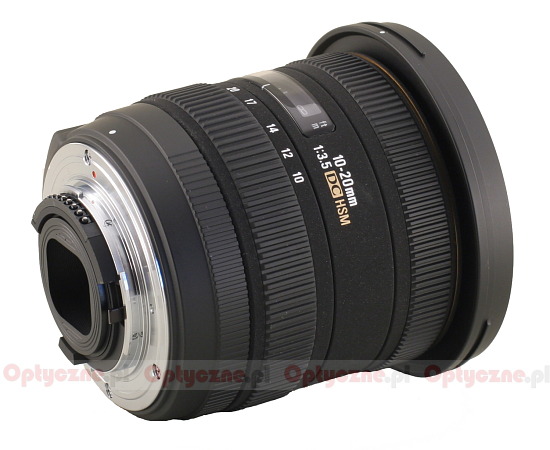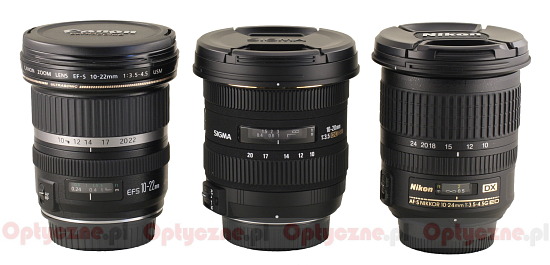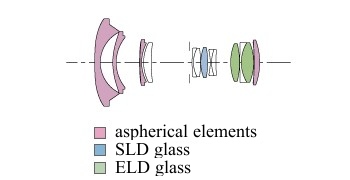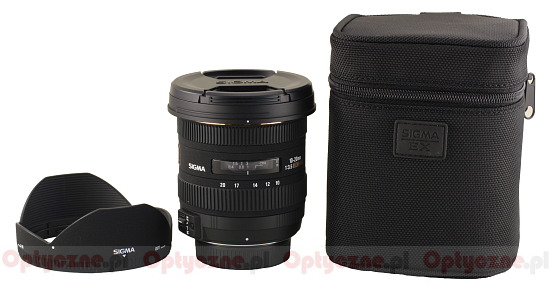Sigma 10-20 mm f/3.5 EX DC HSM
3. Build quality
 |
The bayonet is obviously metal. We find a square hole in it, hiding the rear lens, which moves when zooming. It’s at its shallowest position at 10 mm and deepest at 20 mm. Right behind the bayonet, on the left, there’s a switch for changing the focusing mode (AF/MF). Going farther, we find a medium sized zooming ring. It works fluently and with appropriate resistance. Above this ring we find a distance scale in feet and meters and placed behind a pane of glass. Farther, there’s a focusing ring that’s a little narrower than the focusing ring. What’s surprising, it works hard and with quite significant resistance, but on the whole, it’s hard to classify that as a drawback, as it allows precise focusing. I prefer a ring working a little too hard, than a little too easily. It takes as much as 130-140 degrees to fully rotate it, which is a large amount considering the lens of such short focal lengths.
Please Support UsIf you enjoy our reviews and articles, and you want us to continue our work please, support our website by donating through PayPal. The funds are going to be used for paying our editorial team, renting servers, and equipping our testing studio; only that way we will be able to continue providing you interesting content for free. |
- - - - - - - - - - - - - - - - - - - - - - - - - - - - - - - - - - - - - - - - - - - - - - - -
The dimensions of the lens change a little when zooming. It’s the smallest at around 15 mm and extends when going to shorter and longer focal lengths. The lens reaches its maximum size at 10 mm, but even then the front lens system protrudes from the body only by about 0.5 cm. Neither focusing, nor zooming cause the filter thread to rotate, which has an enormous diameter of 82 mm. Working with polarizing or graduated neutral density filters will not cause us any troubles, as long as we “handle” their prices.
As far as comparing to its rivals is concerned, Sigma is the most barrel-shaped and slightly shorter. A thorough comparison of all the important features is shown in this table. As we can see, the lens tested here is the heaviest of all, has the largest filter diameter and the biggest amount of special lenses inside, although when compared to its predecessor with worse light, the total amount of elements has decreased. The picture below additionally shows Sigma standing next to Canon 10-22 mm and Nikkor 10-24 mm.
 |
Since were at the optical construction, we’ll further this subject. Sigma 10-20 mm f/3.5 consists of 13 lenses set up in 10 groups. Two elements were made of ELD (Extraordinary Low Dispersion) glass, and one of SLD (Special Low Dispersion) glass, and as much as four lenses were shaped aspherically. Inside we also find a circular diaphragm of seven blades that can be closed down to f/22.
 |
A buyer gets a petal lens hood, a hard case and both caps in the set.
 |






